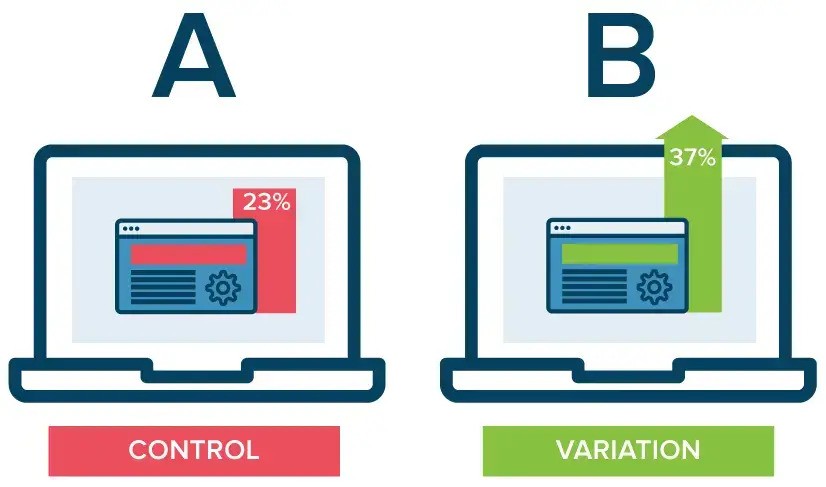.jpg)
Table of Contents:
- Introduction
- Understanding Intellectual Property Rights in UGC
- Legal Risks Associated with UGC
- Key Laws and Regulations Impacting UGC
- Best Practices for UGC Management
- Emerging Trends in UGC and Legal Considerations
- Case Studies: Successes and Challenges in UGC Management
- Conclusion: Navigating the Legal Landscape of UGC
Ever wondered why some Shopify stores seem to effortlessly turn casual visitors into loyal customers? The secret often lies in a powerful marketing tool known as social proof. In the world of ecommerce, social proof is a game-changer, building trust and credibility by showing potential buyers that others have had positive experiences with your products.
Shopify, as one of the leading ecommerce platforms, offers a plethora of ways to integrate social proof seamlessly into your site. By leveraging social proof, you can create a shopping experience that not only attracts but also converts and retains customers. Imagine turning your happy customers into brand advocates who help you sell without you lifting a finger. Sounds great, right?
In this article, we're going to dive into the essential ways you can embed social proof into your Shopify site. We'll cover everything from collecting authentic reviews and testimonials to displaying them in a way that maximizes their impact. By the end, you'll have a clear roadmap to boost your store's credibility and drive more sales. Let’s get started!
Understanding Social Proof

Alright, let's get into the nuts and bolts of social proof. Simply put, social proof is the psychological phenomenon where people look to the actions and opinions of others to determine their own behavior. In the context of ecommerce, it's about showing potential customers that others have had positive experiences with your products. This builds trust and can significantly influence purchasing decisions.
There are several types of social proof you can leverage:
1. Testimonials: These are personal endorsements from satisfied customers. They can be incredibly persuasive because they provide a genuine, relatable voice that potential buyers can trust.
2. Reviews and Ratings: Seeing that others have purchased and rated a product highly can reassure potential buyers about the quality and reliability of your offerings.
3. User-Generated Content (UGC): This includes photos, videos, and social media posts created by your customers. UGC is gold because it shows real people enjoying your products in their everyday lives.
4. Influencer Endorsements: Partnering with influencers who align with your brand can amplify your reach and credibility. Their followers trust their recommendations, making influencer endorsements a powerful form of social proof.
5. Case Studies: Detailed accounts of how your product has helped a customer solve a problem or achieve a goal. These are particularly effective for high-ticket items or B2B products.
Why is social proof so effective in ecommerce? It's all about trust. Online shoppers can’t touch or try your products, so they rely on the experiences of others to gauge whether they should make a purchase. By integrating social proof into your Shopify site, you can reduce uncertainty, build credibility, and ultimately drive more sales.
Check out this Swipe File we put together on 101 examples of social proof in e-commerce.
Next up, we'll talk about how to gather all this fantastic social proof. Spoiler alert: Shopify makes it pretty easy!
Collecting Social Proof on Shopify
Now that we understand the different types of social proof, let’s talk about how to gather it. The good news is that Shopify offers a variety of tools and apps to help you collect valuable social proof without breaking a sweat.
First, let's highlight Moast's Shopify app. If you're looking to seize your shopper’s undivided attention with high-performing customer content, our Shopify app is a top choice. Attention is hard to come by, but our app helps you capture and display interactive customer content that your shoppers actually care about. This not only boosts engagement but also significantly boosts sales. With Moast, you can easily integrate authentic customer experiences into your Shopify store, turning your satisfied customers into powerful advocates for your brand.
Here are some other effective ways to collect social proof on Shopify:
1. Post-Purchase Review Requests: After a customer makes a purchase, send a follow-up email requesting a review. You can automate this process using Shopify apps like Judge.me or Yotpo. These tools make it easy for customers to leave detailed reviews and ratings directly on your product pages.
2. Social Media Integration: Encourage your customers to share their purchases on social media with a branded hashtag. You can then use apps like Social Photos to display this user-generated content on your Shopify site, showcasing real-life customer experiences.
3. Incentivize Reviews: Offer a small discount or a special offer in exchange for a review. This can be a great motivator for customers to share their feedback. Just make sure the incentive is small enough to keep the reviews honest and genuine.
4. Customer Surveys: Conduct surveys to gather detailed testimonials and feedback. Tools like SurveyMonkey or Typeform can be integrated with Shopify to help you collect insightful customer stories that can be turned into powerful testimonials.
5. Influencer Partnerships: Reach out to influencers who align with your brand and offer them your products in exchange for an honest review or a feature on their social media channels. This not only generates authentic content but also expands your reach to their followers.
Collecting social proof is all about making it easy and worthwhile for your customers to share their experiences. By leveraging these tools and strategies, you'll gather a wealth of social proof that can be displayed across your Shopify site to build trust and drive sales.
Displaying Social Proof Effectively
Collecting social proof is just the first step. The real magic happens when you display it effectively on your Shopify site. Here’s how to make sure your social proof grabs attention and converts visitors into customers:
1. Product Pages
Place reviews and testimonials prominently on your product pages. This is where potential customers are making their purchase decisions, so having positive feedback front and center can be a deal-maker. Consider using star ratings and short review snippets near the product title or price to catch the eye immediately.
2. Home Page
Your home page is the first impression visitors get of your store. Use this prime real estate to showcase your best reviews and user-generated content. Highlight a few standout testimonials or feature a scrolling carousel of customer photos. Apps like Loox can help you create stunning displays of social proof on your home page.

3. Customer Photos and Videos
Seeing real customers using your products can be incredibly persuasive. Use apps like Moast to display interactive customer content that shoppers care about. With Moast, you can turn user-generated photos and videos into shoppable content, allowing visitors to see your products in action and get inspired to make a purchase.
4. Email Marketing
Incorporate social proof into your email marketing campaigns. Whether you’re sending out a newsletter, a product launch announcement, or an abandoned cart reminder, including customer reviews or success stories can boost your email’s effectiveness. For example, add a testimonial near the call-to-action button to reinforce trust.
5. Dedicated Social Proof Pages
Create a dedicated page on your Shopify site for customer testimonials and case studies. This page can serve as a go-to resource for potential customers looking for reassurance. Include detailed stories, photos, and videos to provide an in-depth look at how your products have positively impacted your customers.
6. Pop-Ups and Notifications
Use pop-ups and notifications to display recent purchases or reviews in real-time. Apps like Fomo can help you create these dynamic displays, showing visitors that others are buying and loving your products right now. This adds a sense of urgency and credibility to your store.
7. Social Media Feeds
Embed your social media feeds directly on your Shopify site. Tools like Social Media Stream can help you showcase the latest posts from Instagram, Facebook, or Twitter that feature your products. This keeps your site content fresh and demonstrates an active, engaged customer base.

8. Abandoned Cart Recovery
Include social proof in your abandoned cart recovery emails. A gentle reminder of what other customers are saying about the product left in the cart can be the nudge needed to complete the purchase. Highlight a glowing review or a photo of a happy customer to rekindle interest.
By strategically placing social proof throughout your Shopify site, you can create a shopping experience that feels trustworthy and reliable. This not only enhances the customer journey but also significantly boosts your conversion rates.
Converting Visitors with Social Proof on Shopify
Now that you’ve gathered and displayed social proof on your Shopify site, it’s time to turn those interested visitors into loyal customers. Here’s how to use social proof to drive conversions effectively.
First, let's talk about the power of urgency and scarcity. Highlighting social proof can create a sense of urgency that nudges visitors towards making a purchase. For instance, displaying notifications of recent purchases or showing how many people are viewing a product right now can spur action. Apps like Fomo can help create these real-time notifications, showing potential buyers that your products are in high demand.
Next, consider creating a dedicated page for customer success stories and case studies. Detailed testimonials that outline how your product solved a problem or enhanced someone’s life can be incredibly compelling. These stories provide context and help potential customers envision themselves having similar positive experiences. Make sure to include a call to action on these pages, encouraging visitors to take the next step and make a purchase.
Incorporating social proof into your email marketing campaigns can also drive conversions. For example, when sending abandoned cart emails, include a few positive reviews or a testimonial related to the product left behind. This reminder of other customers' satisfaction can reignite interest and motivate the recipient to complete their purchase.
Pop-ups and notifications are another great way to leverage social proof for conversions. Displaying a pop-up with a recent review or a notification that someone just bought the product can create a sense of excitement and immediacy. These elements reassure visitors that others are actively buying and enjoying your products, which can help reduce hesitation.
Additionally, consider adding social proof to your checkout process. A few well-placed testimonials or star ratings near the checkout button can provide that final bit of reassurance needed to complete the purchase. It’s a subtle yet effective way to boost confidence and minimize cart abandonment.
Finally, don't forget to continuously update and optimize your social proof strategy. Regularly add new reviews, update customer photos, and tweak the placement of social proof elements based on performance data. A/B testing different types of social proof can help you determine what resonates best with your audience, ensuring that you’re always putting your best foot forward.
By integrating social proof into various touchpoints of the customer journey, you can significantly enhance trust and credibility, making it easier for visitors to convert into paying customers.
Measuring the Impact of Social Proof
Congratulations on embedding social proof throughout your Shopify site! Now, let's talk about measuring its impact to ensure your efforts are paying off. Understanding the effectiveness of your social proof strategies will help you refine and optimize for even better results.
First, set up analytics to track conversions related to social proof elements. Shopify’s built-in analytics, along with tools like Google Analytics, can provide insights into how social proof influences customer behavior. Track metrics such as conversion rates, average order value, and time spent on pages with social proof.
A/B testing is another powerful way to measure the impact of social proof. Test different types of social proof—like testimonials versus user-generated content—or different placements on your site. For example, you might test a version of your product page with customer photos against one with written reviews. By comparing the performance of these variations, you can identify what resonates most with your audience.

It’s also important to monitor engagement metrics. Look at how customers interact with social proof elements. Are they clicking on reviews to read more? Are they engaging with customer photos or videos? High engagement rates can indicate that your social proof is capturing attention and building trust.
Customer feedback is another valuable source of insight. Consider conducting surveys or gathering feedback through post-purchase emails to understand how social proof influenced the decision-making process. Ask customers what information helped them feel confident in their purchase and use this feedback to refine your strategy.
Regularly update your social proof to keep it relevant and compelling. Fresh reviews, recent customer photos, and up-to-date testimonials can maintain the credibility and trustworthiness of your social proof. Stale or outdated content might have the opposite effect, so keep your social proof current.
Finally, don’t forget to review your overall sales performance and customer satisfaction. Are you seeing an increase in repeat purchases? Has customer retention improved? These broader indicators can help you assess the long-term impact of social proof on your business.
By diligently measuring and analyzing the impact of your social proof, you can continuously optimize your approach. This will ensure that your Shopify site remains a trustworthy and compelling destination for potential customers, driving both sales and customer loyalty.
Conclusion: Leveraging Social Proof for Shopify Success
To wrap things up, integrating social proof into your Shopify site is one of the most effective strategies you can use to build trust and drive sales. By understanding the different types of social proof, collecting authentic content, displaying it strategically, and using it to convert visitors, you create a shopping experience that feels credible and reliable.
Remember, tools like Moast can help you capture and display interactive customer content that truly resonates with your audience. From showcasing glowing reviews on your product pages to featuring customer success stories in your email campaigns, every touchpoint is an opportunity to leverage social proof.
Don’t forget to measure the impact of your efforts. Track conversions, engage in A/B testing, gather customer feedback, and keep your social proof fresh and relevant. This continuous optimization will ensure your strategies remain effective and your Shopify store continues to thrive.
Now, it’s time to put these insights into action. Start embedding social proof in your Shopify site today and watch as your trustworthiness and sales soar. Good luck, and happy selling!
Related content
Turn your videos into sales
Boost conversions by up to 30% by turning your existing TikToks and Reels into shoppable videos directly on your Shopify store.












